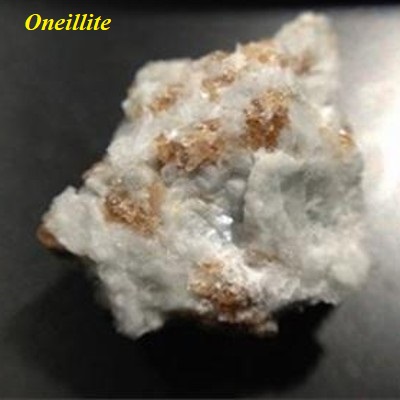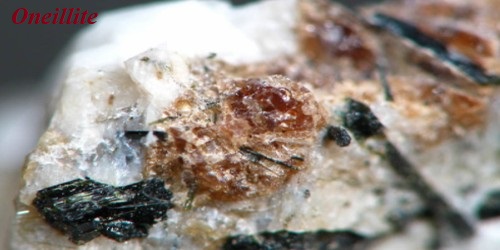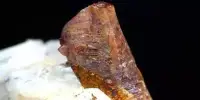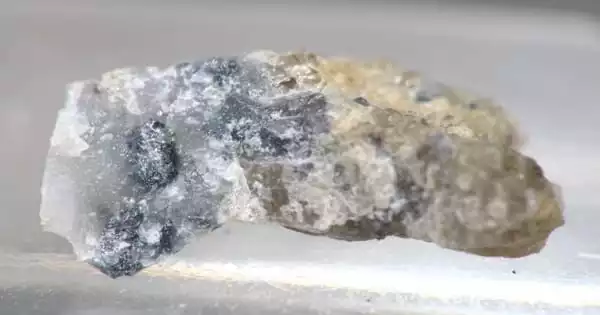Oneillite is a rare mineral of the eudialyte group with the formula Na15Ca3Mn3Fe23+Zr3NbSiO(Si3O9)2(Si9O27)2(O,OH,H2O)3(OH,Cl)2. It was named for John Johnston O’Neill, as a geologist with the Geological Survey of Canada and Professor of Geology and Dean of Science and Dean of Engineering at McGill University in Montreal, Canada. It is a trigonal-pyramidal yellowish-brown mineral containing calcium, chlorine, hydrogen, iron, manganese, niobium, oxygen, silicon, sodium, and zirconium.
General
- Category: Silicate mineral, Cyclosilicate
- Formula: Na15Ca3Mn3Fe23+Zr3NbSiO(Si3O9)2(Si9O27)2(O,OH,H2O)3(OH,Cl)2.
- Crystal system: Trigonal
- Crystal class: Pyramidal (3)

Properties
Rare earth elements in oneillite include cerium, lanthanum, neodymium, and yttrium, with minor praseodymium and gadolinium. Other impurities are potassium, and minor amounts of aluminum, hafnium, strontium and tantalum. Similar feature is displayed by some other eudialyte-group members: aqualite, labyrinthite, raslakite, and voronkovite.
- Color: Yellowish brown
- Crystal habit: anhedral grains
- Cleavage: None
- Fracture: Uneven
- Tenacity: Brittle
- Mohs scale hardness: 5-6
- Luster: Vitreous
- Streak: White
- Diaphaneity: Transparent or translucent
- Density: 3.20 g/cm3 (measured)
Occurrence and association
Oneillite is one of four eudialyte-group minerals discovered within alkaline rocks of Mont Saint-Hilaire, Quebec, Canada. It associates with aegirine, albite, sodalite, and pyrite.
The type and only locality for Oneillite are at the Poudrette quarry at Mont Saint-Hilaire in Quebec, Canada where it is found at a contact between a vein of albite and the nepheline syenite. Oneillite occurs as yellow to brown anhedral grains.
Information Source;
















